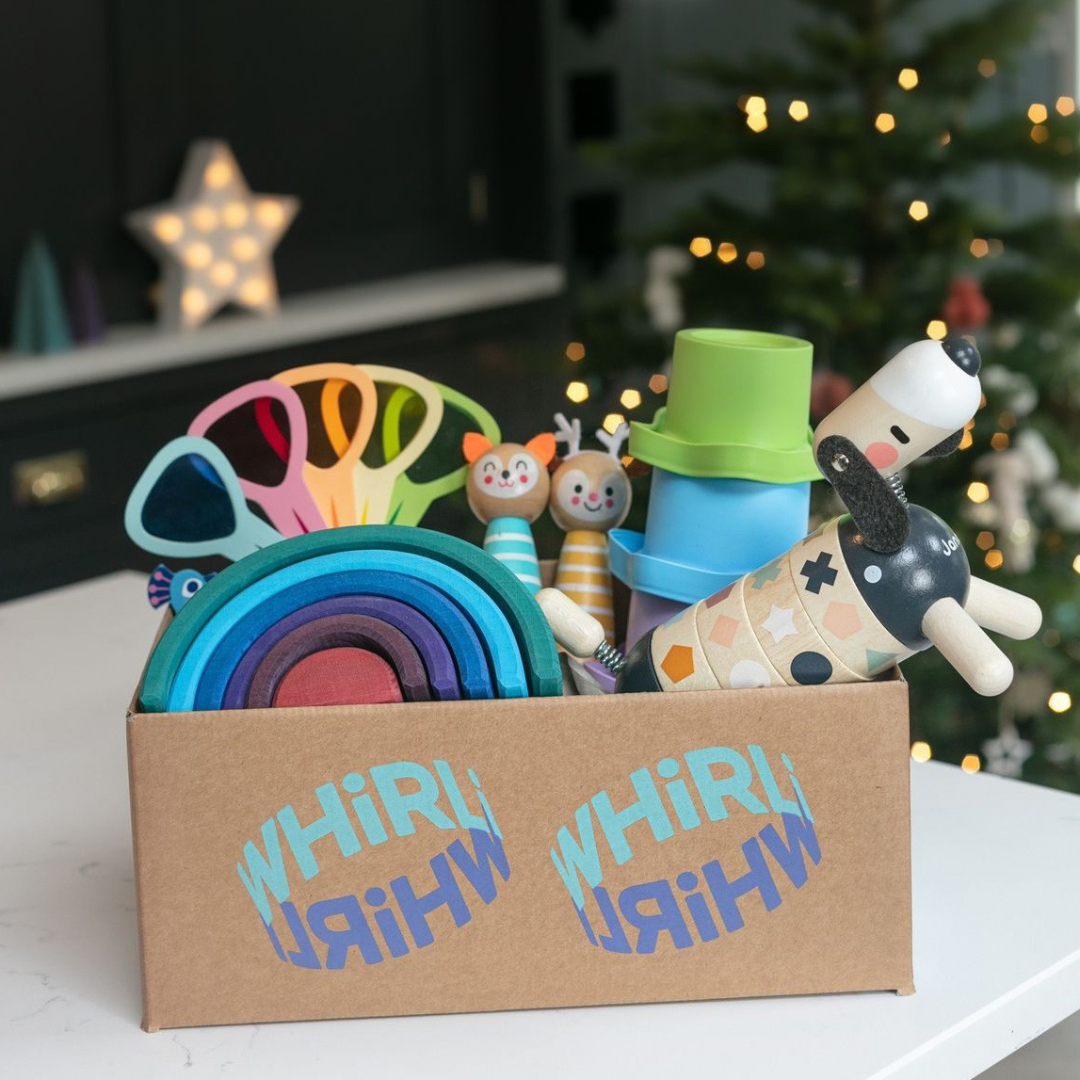Advertisement feature in association with Whirli
A couple of weeks ago after school I took my grandson Joey, who is now four-years-old if you can believe that, (which I can because he is always texting me from Bee’s phone saying ‘Joey is 4’), to the garden centre. We started with a look at the Christmas decorations and the giant singing penguins. Joey wasn’t sure about them. He liked the singing, but I had to press the button in case they bit him. We stopped in the cafe and then we had a look at the toys so that I could have the honour of buying him something.
What I noticed, as is typical for children Joey’s age, is that the thing he definitely wanted more than anything in the world was the thing that he happened to be looking at at any given moment. He really, honestly had always wanted a French knitting set more than anything, until he saw the miniature marble run etc etc
It’s for exactly this reason that Whirli was invented.
Kids are fickle. They love toys, but they rarely love them for long. Parents on average spend hundreds of pounds on toys every year, only for kids to quickly get bored or outgrow them, and for the toys to end up left in a cupboard or even in landfill.
Whirli wants to change this. With a Whirli swappable toy subscription, the average customer plays with £720 worth of toys over a year for, on average, £12.42 per month – £570 of savings compared to if they’d bought the toys.

How does Whirli work?
Whirli is a new way to buy toys. Rather than buying the toys, you pay a monthly subscription that allows you to access Whirl’s library of thousands of toys. Swap your tokens for toys, delivered to your door, and keep them for as long as you want – no time limits or late fees. When your child has lost interest, simply return them and swap them for new toys.
If you do find one particular toy your child loves and can’t bear to part with, you can choose to buy it outright for lower than the retail price. It’s that easy. No more unwanted toys languishing under beds or ending up in the bin – Whirli is a sustainable, environmentally friendly and affordable approach to play.

Give the gift of Whirli this Christmas
Okay, so here’s where Whirli really comes into its own. Rather than buying your grandchildren, nieces, nephews, whoever it may be, some kind of pile of plastic that you’re not entirely sure they actually want, you can buy them a Whirli subscription! It’s still a fantastic present, but they get to choose the toys and it’s the gift that keeps on giving.
If you want to gift Whirli can choose to either buy a Whirli gift card that kids can use towards a subscription, or jump right in and pick out a selection of toys that they can either keep or swap for Whirli credit of equivalent value. The gift cards are electronic, so perfect for sending to family that you’re not going to see in person or as a last-minute pick.
Whirli currently has TWO fantastic offers that make buying a Whirli toy subscription more affordable than ever:
- 30-50% off all subscriptions with the code: XMAS (ends 23:59 23/12/2023)
- 30% off gift cards and gift toy boxes with the code: GIFT30 (ends 23:59 23/12/2023)
Go and explore Whirli and give a Christmas gift that kids are guaranteed to love!

















